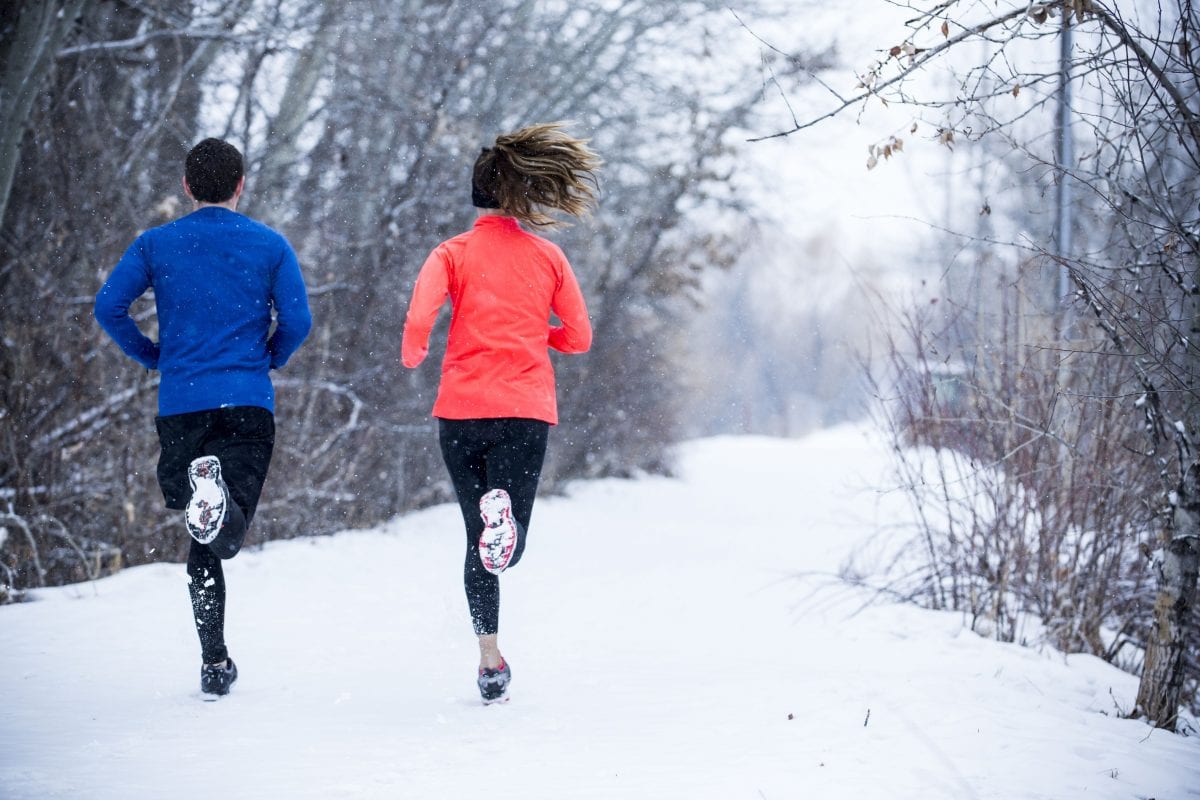As we head into the winter months, our breath begins to freeze on our eyelids, and the snow begins to crunch beneath our feet. If you’re looking to brave these conditions to continue running through the winter I have some tips on gear and safety that to help stay warm and safe while running throughout the next several months.
My top three recommendations for winter running gear would be to ensure you are wearing enough layers, choose the right footwear, and running with winter friendly electronics.
When it comes to layering, you want to ensure that you are wearing at least two layers on the top and bottom half of your body! It is really important to wear enough clothes and to cover up all exposed skin; for example, I wear long socks to cover that space between my shoes and pants, and I also like to wear fleece lined tights as one of my bottom layers.
Wearing the correct running shoes for winter is really important to help avoid slipping. You want a shoe that can grip the ice and snow, and also one that is waterproof, or at least water resistant so that your feet stay warm and dry. When purchasing shoes, you should ask a knowledgeable shoe salesperson about their best winter options.
More than once I have come back from a winter run only to discover that my phone has died due to the cold. To prevent this annoying situation, when you are purchasing electronics, especially running watches, ensure that they are winter friendly and able to withstand cold temperatures. If possible You can also try keeping your phone close to your body to keep it from freezing.
Running during the winter can definitely be a safety hazard. To help keep you safe I want share my top three safety tips to help you avoid injury. They are, ways to avoid frostbite, utilize the daylight, and beware of uneven ground.
When the temperature drops to minus 20 Celsius (including the Windchill) is when frostbite can happen to any exposed skin such as the face, wrists and ankles. You should avoid running at these temperatures, or else ensure that no skin is exposed while you are running.
As the temperature drops, so do the daylight hours. If you are a morning or evening runner, when winter comes it is likely that you will end up running in the dark. It is important not to get caught in the dark unprepared, and if you are running after daylight hours, wear reflective gear and headlamps so people and drivers can see you.
Running on snow, ice, and ground that is uneven is almost unavoidable after the first snowfall but uneven surfaces can lead to sore hips, joints, and tendons. I struggled a few years ago with an Achilles injury and even though it was healed, the next winter I discovered that running on uneven snowy surfaces aggravated the tendon. If you have past injuries, I would suggest trying to run on flat surfaces when possible.
These tips are just a few that I have learned in my seven plus years of running both on my own and as a college athlete. There is nothing more beautiful than a crisp morning run in the winter with the sun shining and the snow sparkling; however, unfortunately accidents and injuries can happen to the best of us. I hope that you will utilize these tips in your own running so that we can all stay safe in the winter and keep enjoying all the benefits that running has on our mind and body. As 1957 Boston Marathon Champion John Kelley said, “We runners are all a little nutty, but we’re good people who just want to enjoy our healthy, primitive challenge. Others may not understand running, but we do, and we cherish it.”
By Elise Nawrocki








